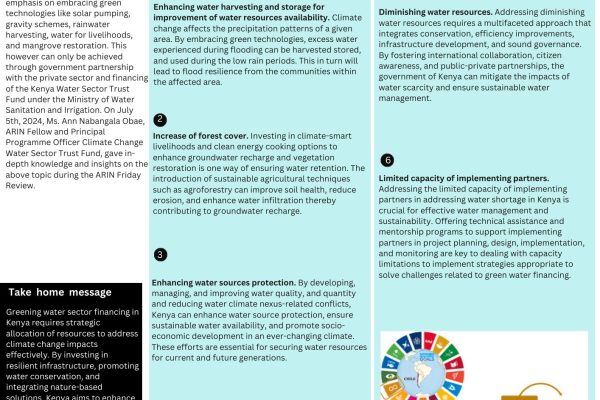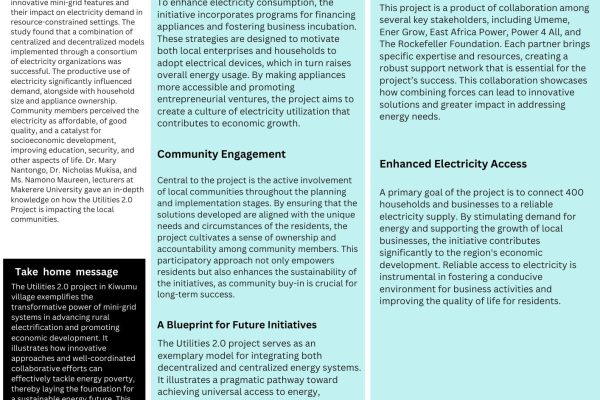Introduction
Urban health systems are seriously at risk from climate change, especially in African cities. The capital city of Chad, N’Djamena, is the subject of this case study, which explores the relationship between individual adaptation efforts, the susceptibility of urban health systems, and climatic threats. Due to its position and climate, N’Djamena, the capital city of Chad, is extremely vulnerable to various climatic hazards. These are N’Djamena’s main climate-related risks. The lecture was presented by Dr. Atchade Assouhan Jonas, Research Associate at Africa Research and Impact Network on April 05, 2024.
Key Messages.
Extreme Temperatures. Rising Temperatures: N’Djamena has year-round high temperatures, with peak values frequently reaching 40°C (104°F). Climate change is causing the city to experience increasingly frequent and intense heatwaves. Severe heat worsens pre-existing medical issues like respiratory and cardiovascular disorders and raises the risk of illnesses caused by heat, existing health problems like respiratory and cardiovascular disorders worsen and raise the risk of illness caused by heat including heat exhaustion and heat stroke.
Flooding: Due to its proximity to the Chari and Logone rivers, N’Djamena experiences seasonal flooding from June to September. When these rivers overflow due to heavy rains, widespread flooding may result. Flooding has the potential to cause havoc to vital infrastructure, such as hospitals, as well as residences and highways. Additionally, it impedes access to necessary services and transportation. Flooding can lead to contaminated water supplies, which can spread waterborne illnesses like cholera, typhoid, and dysentery.
Aging and inadequate health facilities. To manage the growing number of patients during climate-related events like heatwaves and floods, many of N’Djamena’s healthcare facilities are outdated and ill-equipped. The population size does not correspond with the number of healthcare facilities, which causes overcrowding in the hospitals and lengthy patient wait times. Inadequate upkeep of healthcare facilities frequently leads to worsening conditions that impede the efficient provision of services.
Geographical barriers. Many people find it difficult to get healthcare facilities, particularly those who live in remote and low-income areas, due to poor road infrastructure and transportation-related issues. There is frequently an unequal distribution of healthcare services, with access being better in towns and cities than in rural and semi-urban areas. This difference is especially noticeable in emergencies when rapid medical attention is essential.
Housing modifications. Many locals are building homes on stilts or raised platforms to avoid water damage during the rainy season to combat floods. More resilient building materials, including brick and concrete, are being used more frequently because they can resist harsh weather conditions. To lower inside temperatures and lessen the effects of intense heat, the dwellings are designed to maximize natural ventilation.
Agricultural adaptation. Diverse crop cultivation boosts resistance to climate variability and lessens reliance on a single crop. This involves growing crop varieties that are resistant to drought and mature quickly. Implementing crop rotation and mulching as agricultural conservation strategies to preserve the moisture and nutrients of the soil, and creating communal gardens as a means of improving food security and offering a consistent supply of fresh produce.
Conclusion.
N’Djamena as a case study emphasizes the critical necessity for coordinated strategies to address vulnerabilities in the health system and climate threats. The city can become more resilient to the negative impacts of climate change by enhancing its health infrastructure and putting adaptation methods into practice.




